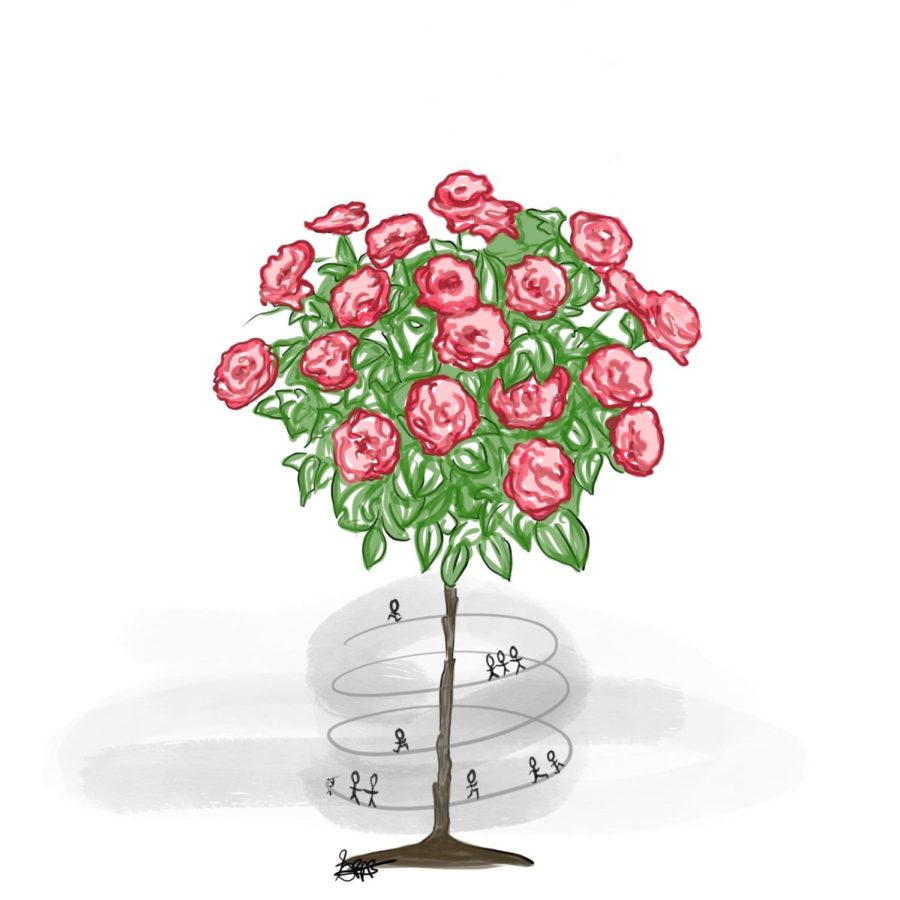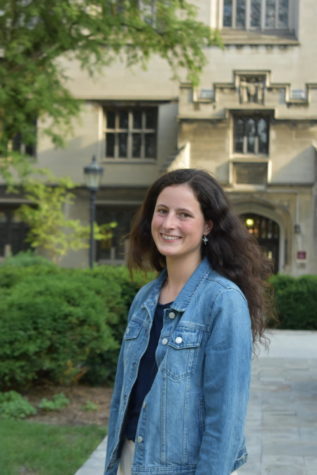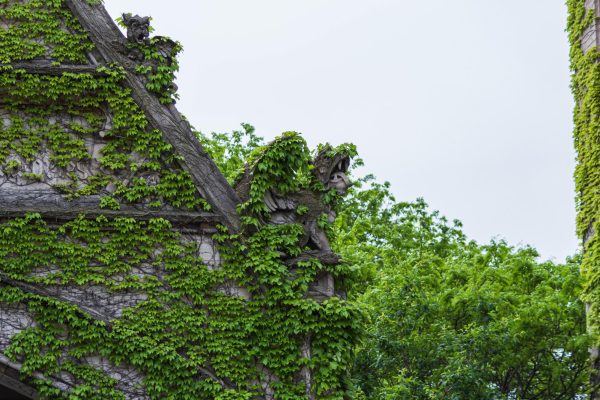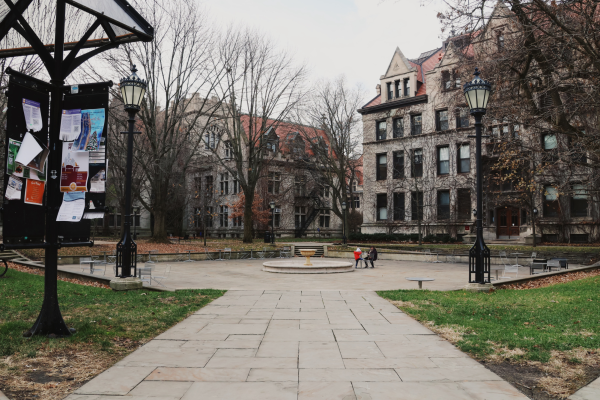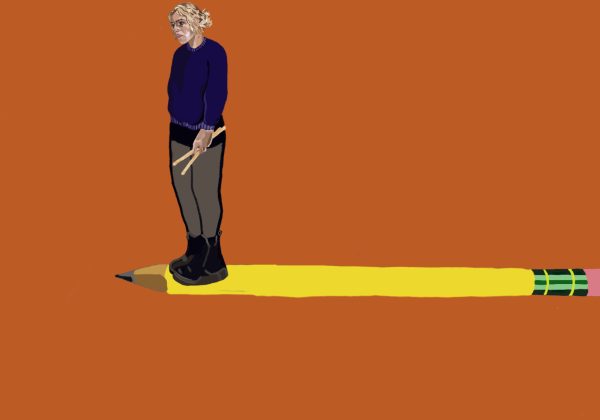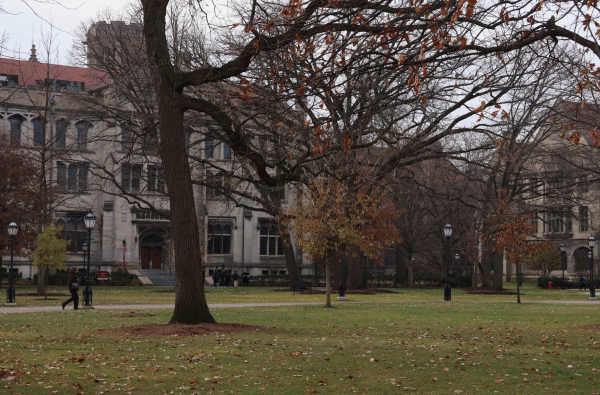Appreciating Hyde Park Parks
As we approach the warm weather of spring quarter, take a break from the rush of college life to embrace natural spaces under threat from the anthropogenic climate crisis.
May 16, 2023
When I walk from Woodlawn Residential Commons to class every day, I join a herd of students in their mad dash to make it to class on time. On either side of the Midway, we band together in anonymous diagonal lines of 20, ensuring everyone’s prompt crossing and obstructing the flow of traffic. And while I’m sure that our blatant rebuke of traffic laws annoys the drivers of Hyde Park to no end, we are relentless. We cross the street without hesitation, knowing that jaywalking is worth the good 15 seconds of travel time we save. Every day, hour, and minute feels like another effort to cut down on time in order to prioritize the important things in life, which seem to only include painstakingly perfecting a problem set, submitting that oh-so-important internship application, or spending your Google Calendar’s allotted one hour break grabbing lunch with your friend. Our constant pursuit of “success” makes us believe that our days must be scheduled down to the 15-minute mark, rushing from class to RSOs to coffee chats. In the process, we fail to see the world around us, from the first tulip in the spring to our friend waving to us from a hammock in the distance.
Columns in the past have articulated the problems with this rush-oriented attitude. They touch on how our stress prohibits us from seeing beyond the UChicago bubble and suggest that stopping and taking care of ourselves will help us realize that homework is not everything. And while I think these critiques of UChicago culture are true, we must stop living in 15-minute intervals so we can also stop and see the nature of Hyde Park. In seeing the natural world around us, we can grow to appreciate the environments that both define our “unscheduled” experiences and face grave threats from anthropogenic climate change.
Beyond the widespread catastrophic effects of climate change, UChicago students who enjoy nature would be sad to see the natural places they love destroyed. With a group of friends, I have often made the trek to the Promontory Point in order to watch the sunset, smell the closest thing we can get to a midsummer night’s campfire, and eat s’mores. When the City announced its plans to remove the limestone revetments at the Point and replace them with concrete, we of course worried that the environmental character of the lake and park would be ruined. Suddenly, it seemed that one of the few places of natural solace in Hyde Park would become just another part of an increasingly concrete-dominated environment. Although the City agreed to restore the limestone revetments (at least for now), this was not without the work of many South Side and Hyde Park activists who have long loved the Point. Generations of Hyde Parkers—both affiliates of UChicago and not—ensured the preservation of the Point because of their absolute dedication to its natural environment. As the Point has long been a place of enjoyment and solace in Hyde Park, its preservation began with the relationships people have fostered with the Point and its limestone coast.
That’s not to say that the Point is Hyde Park’s final bastion of natural beauty; true to its name, Hyde Park is home to a number of parks. Living in Woodlawn, I cross the Midway every day, and many students living off campus walk by Nichols Park or Bixler Park on their daily commutes. Even for those who are not lucky enough to walk through a park every day, we all walk by the natural scenery of the UChicago campus: a botanic garden in and of itself, and a home to many species of trees and flowers. Even so, I often find myself trying to cut as many corners as possible in order to get to the Quad to make it to my next class, and my mind wanders as I think about my next due date. I find, though, that detaching myself from my work for a couple of minutes as I walk across the Midway allows me to take a momentary break from the aspects of UChicago culture that force us to look ahead to our next possible accomplishment. By really looking at the Midway, I can see the ways in which its vegetation changes throughout the year. At the beginning of fall quarter, the leaves of the Midway’s trees are a lush green, but by the middle of the quarter, they have turned to a beautiful Midwestern auburn that always leaves me, a lifelong Californian, in complete awe. Then, by winter, the leaves have descended to the ground, giving way to bare branches covered with a layer of fresh white snow. Finally, as spring quarter rolls around, the vegetation returns to its lush green state. In watching the Midway change throughout the year, we can see a world beyond the arbitrary commitments of college life. In really seeing the parks and natural environments that dot Hyde Park, we can grow to appreciate the nature of our neighborhood. This appreciation is essential at a time in which Hyde Park parks are increasingly under threat.
“Save the Point” and other organizations have, at least for the moment, saved the Point from the City’s plan to replace its limestone revetments with concrete. However, the Midway faces similar threats to its natural habitat. In response to the construction of the Obama Presidential Center (OPC) in Jackson Park, the City has formulated a plan to drain the wetland on the Midway’s east end in order to build a playground. In doing so, the City has designated pre-existing park space on the Midway’s east end as replacement park space for destroyed parkland in Jackson Park. This plan is an environmental injustice both in its destruction of a wetlands habitat in the South Side and in its net reduction of South Side park space. Through its designation of pre-existing park space on the Midway as the sole replacement for the region of Jackson Park that will be destroyed in the construction of the OPC, the plan reduces the park space of the South Side in aggregate. Parks like the Midway are in desperate need of protection, but protection begins with the will to care about natural spaces. In appreciating the parks of Hyde Park, we can not only give ourselves a break from the constructs of a college experience that place undo value on conventional success, but we can also begin to care about the natural spaces that surround us. There is more to Hyde Park than UChicago, and it is time that we collectively look to the natural world as both a remedy to the rush of college life and as a rebuke of environmental destruction.
Elena Tiedens is a second-year in the College.


